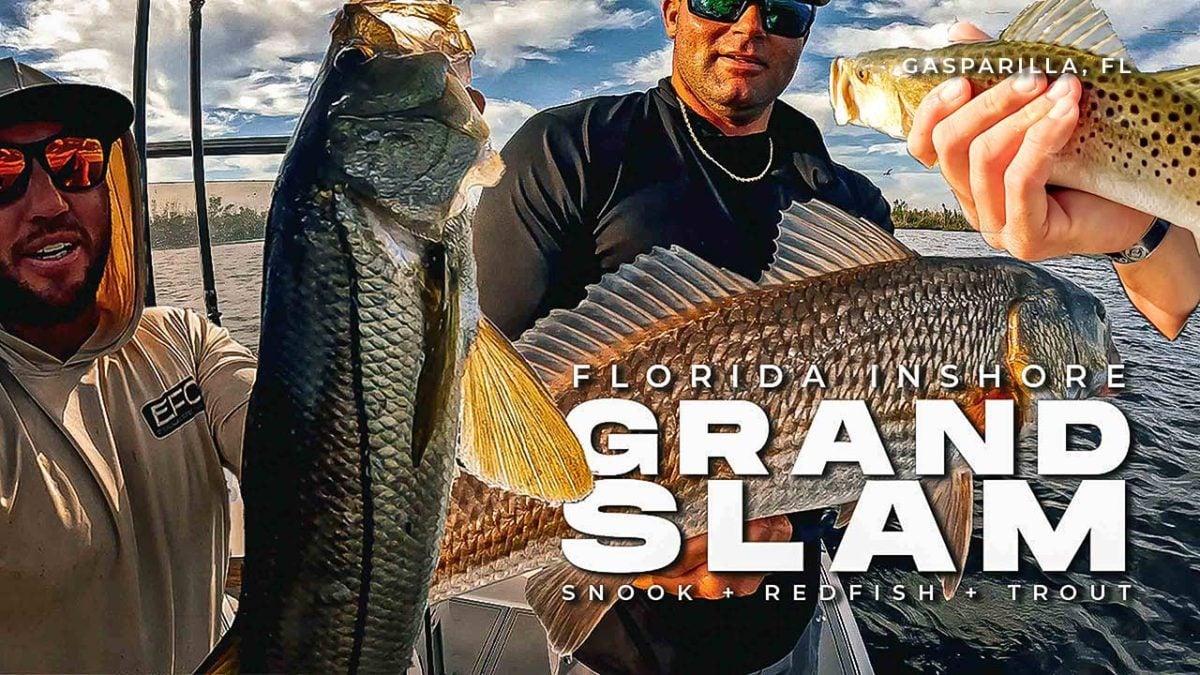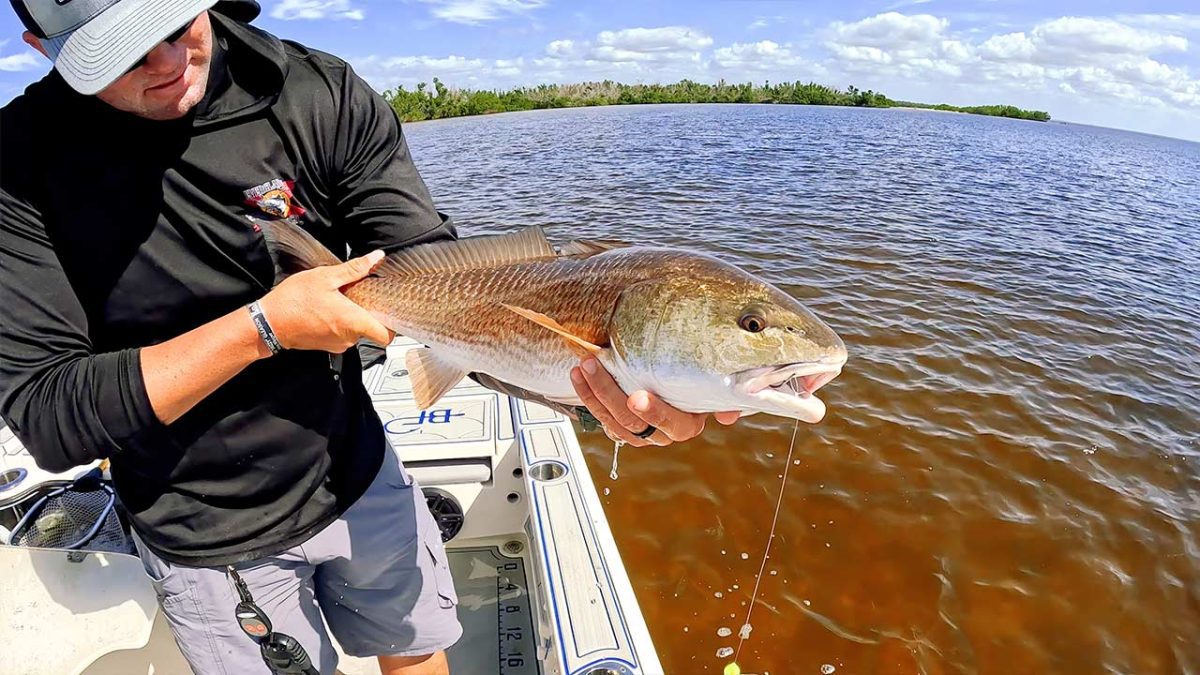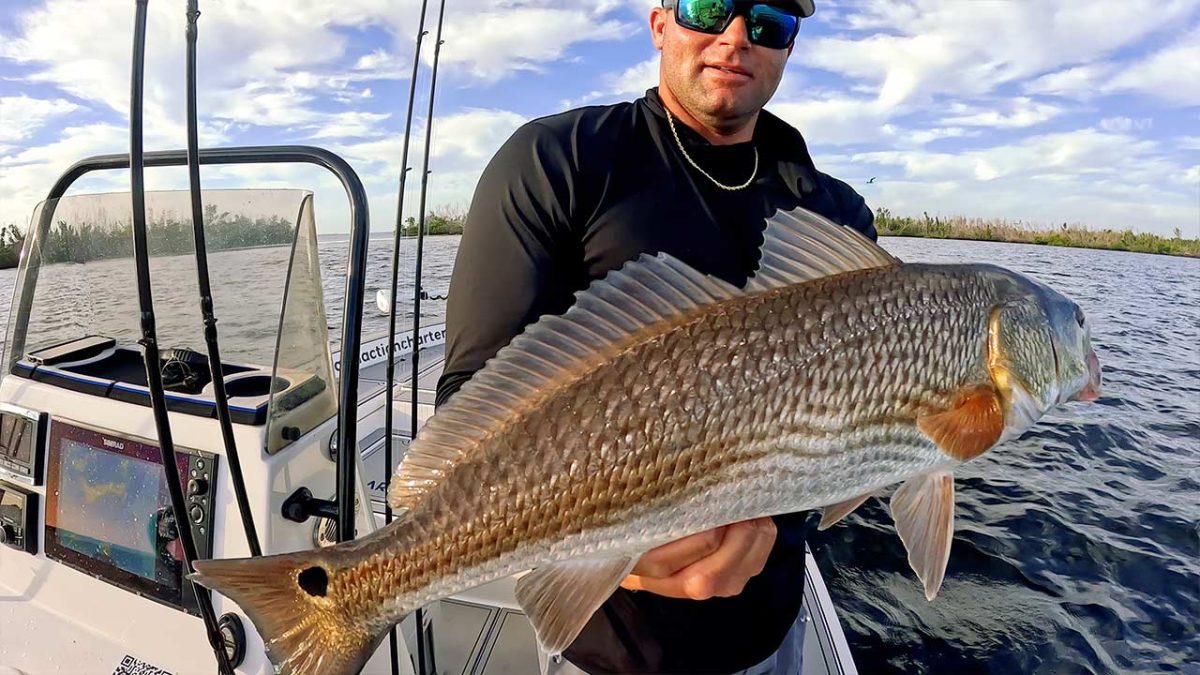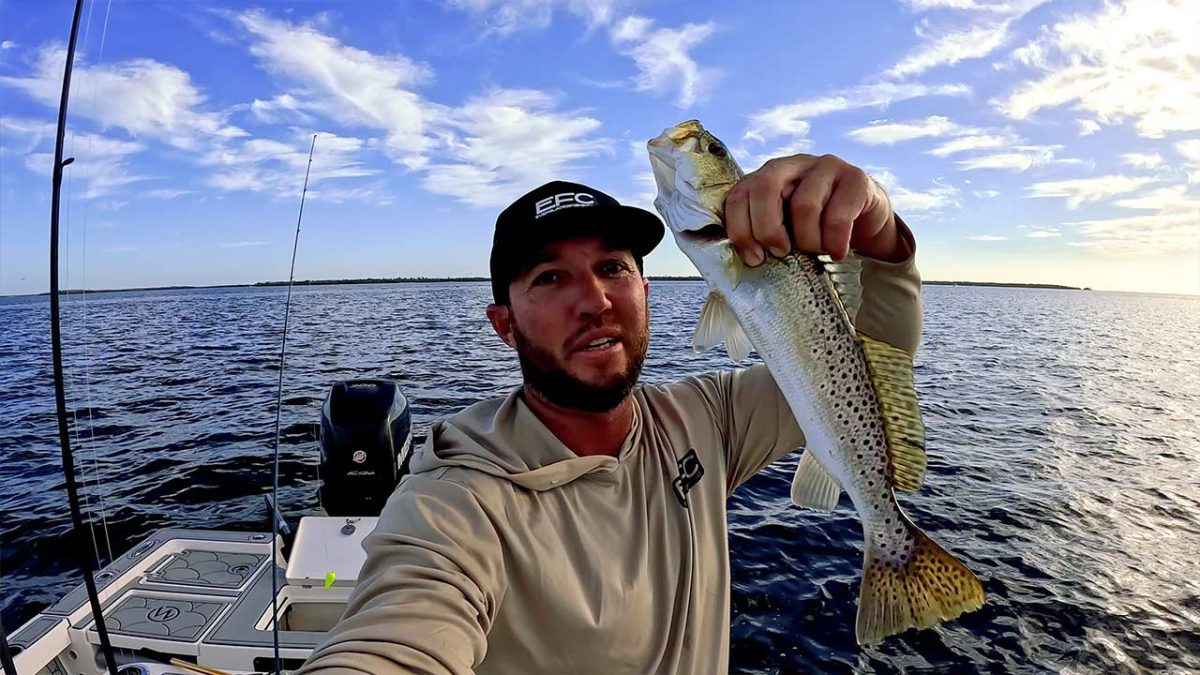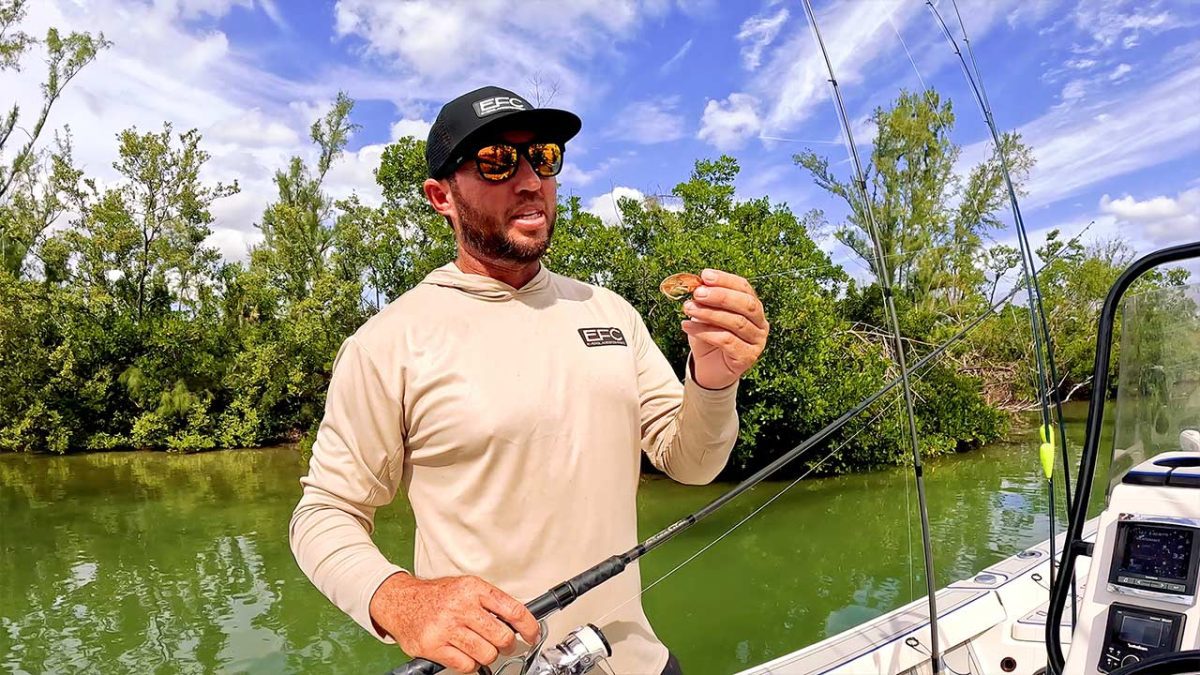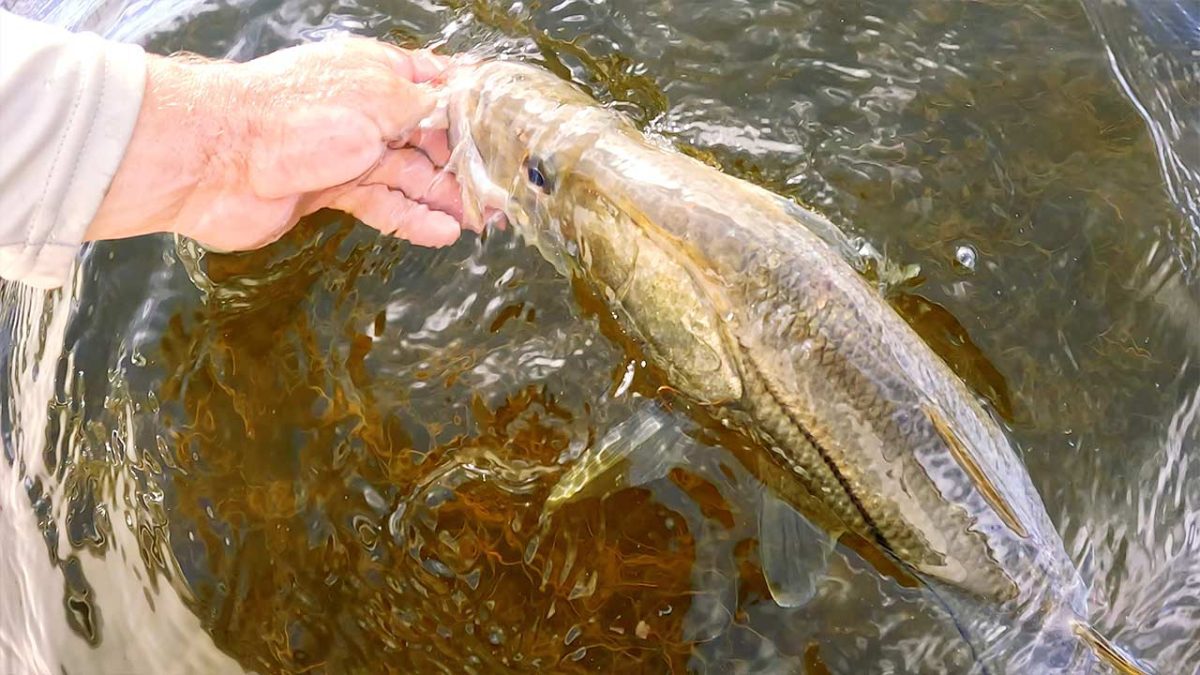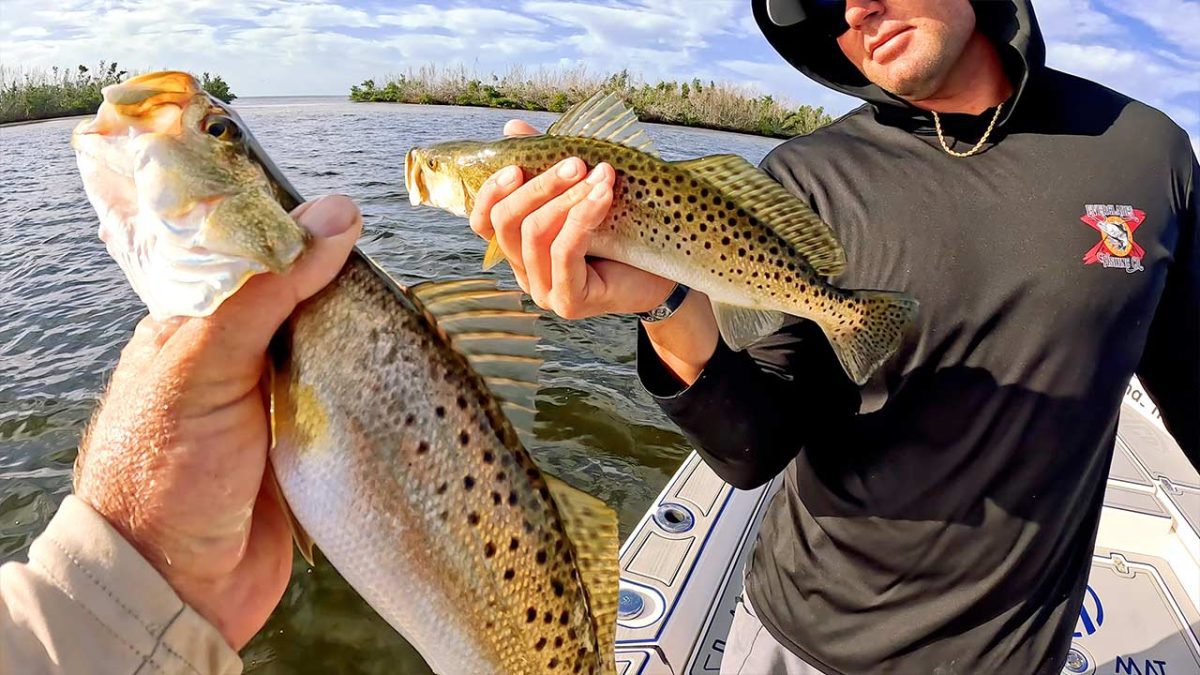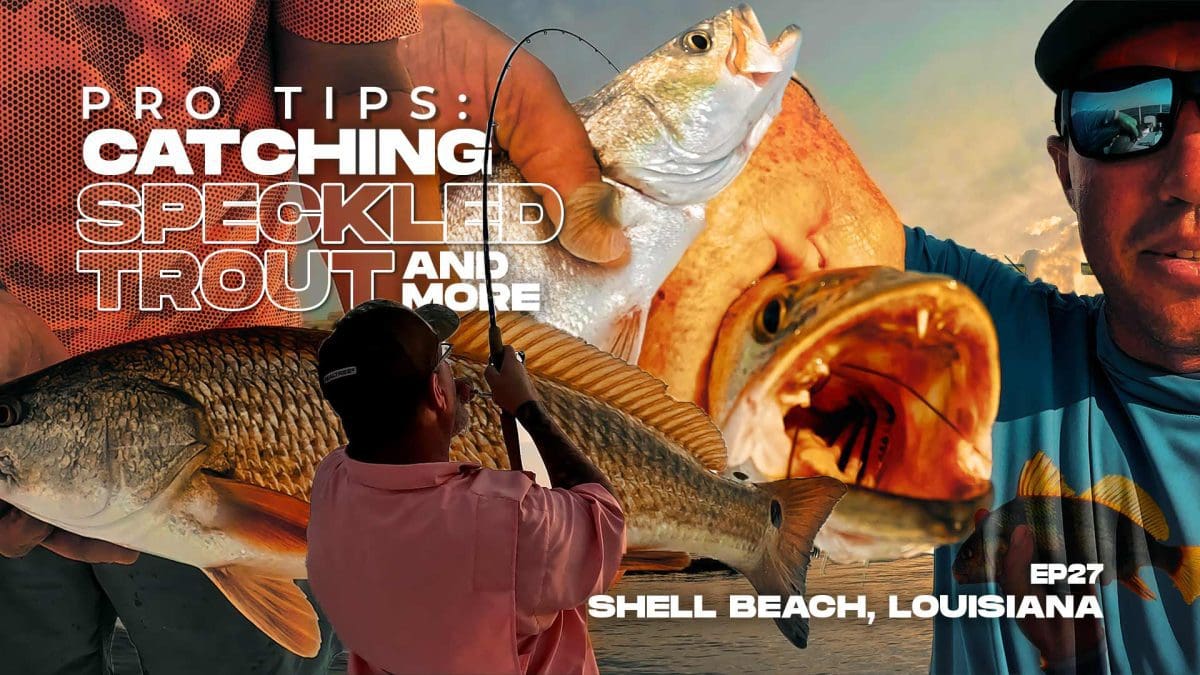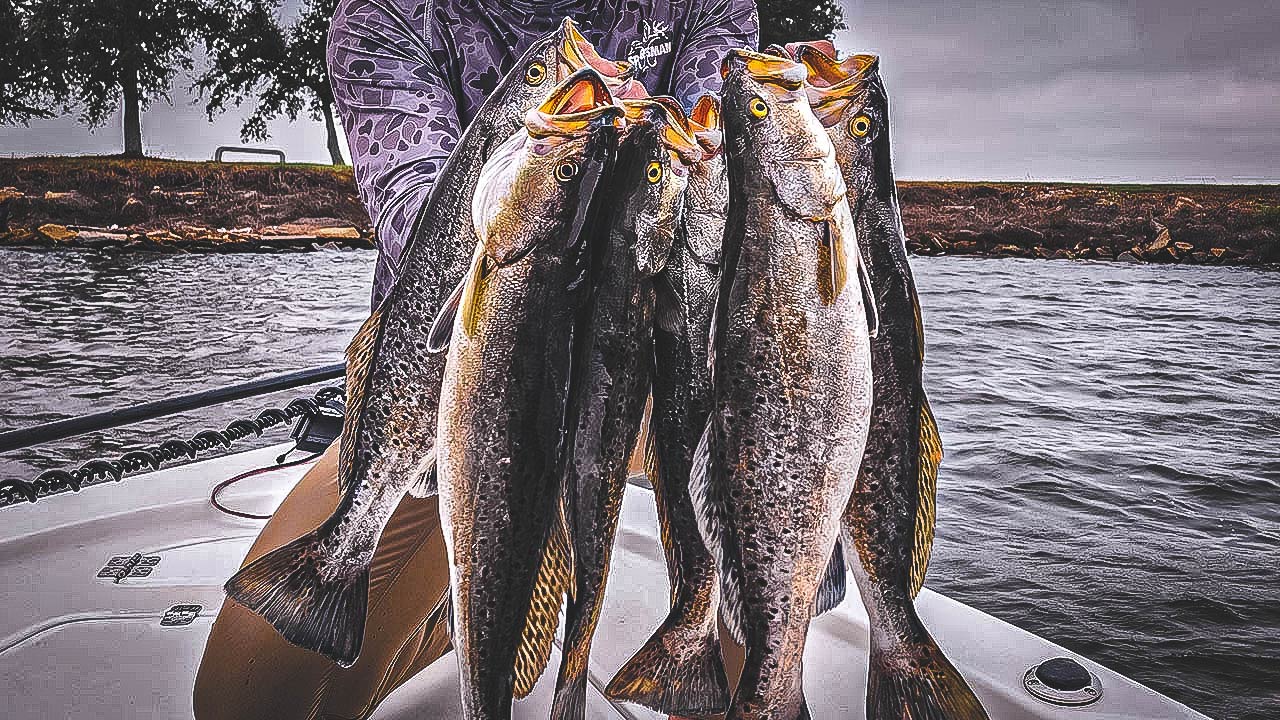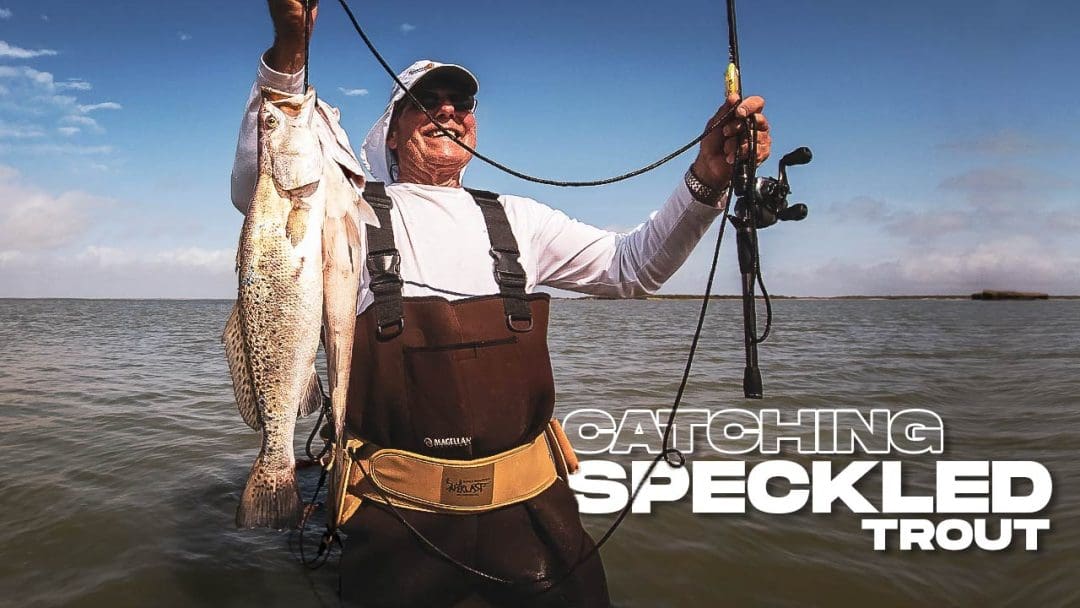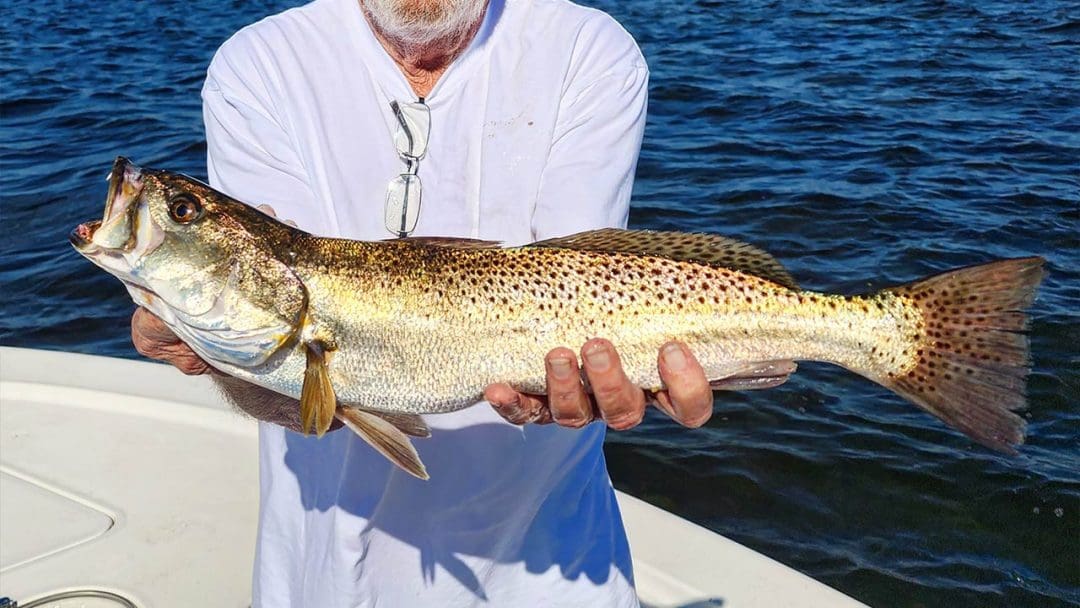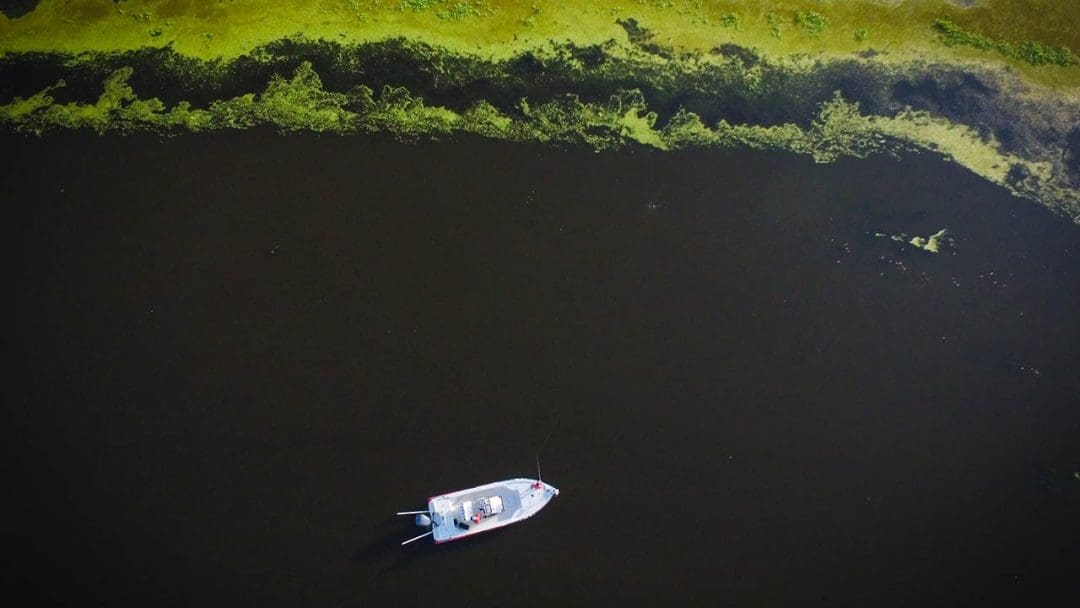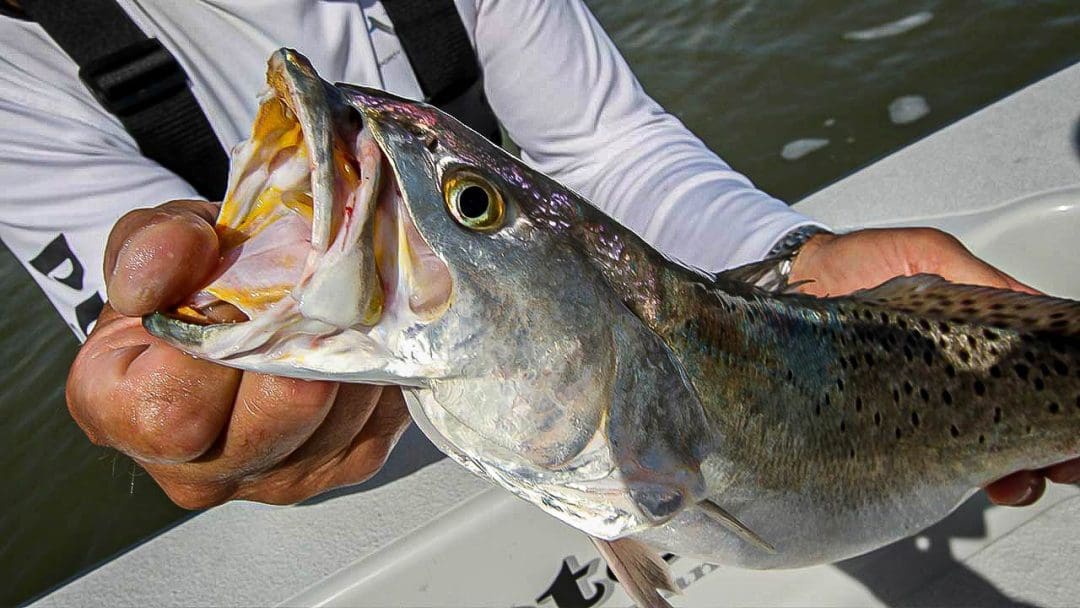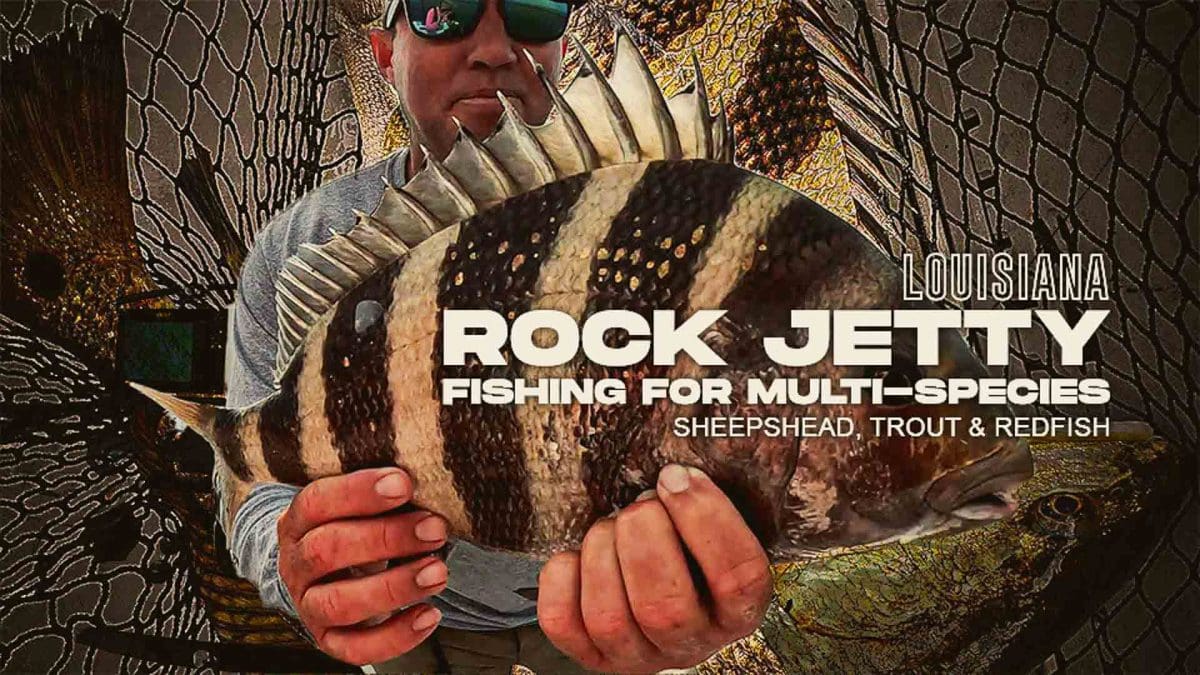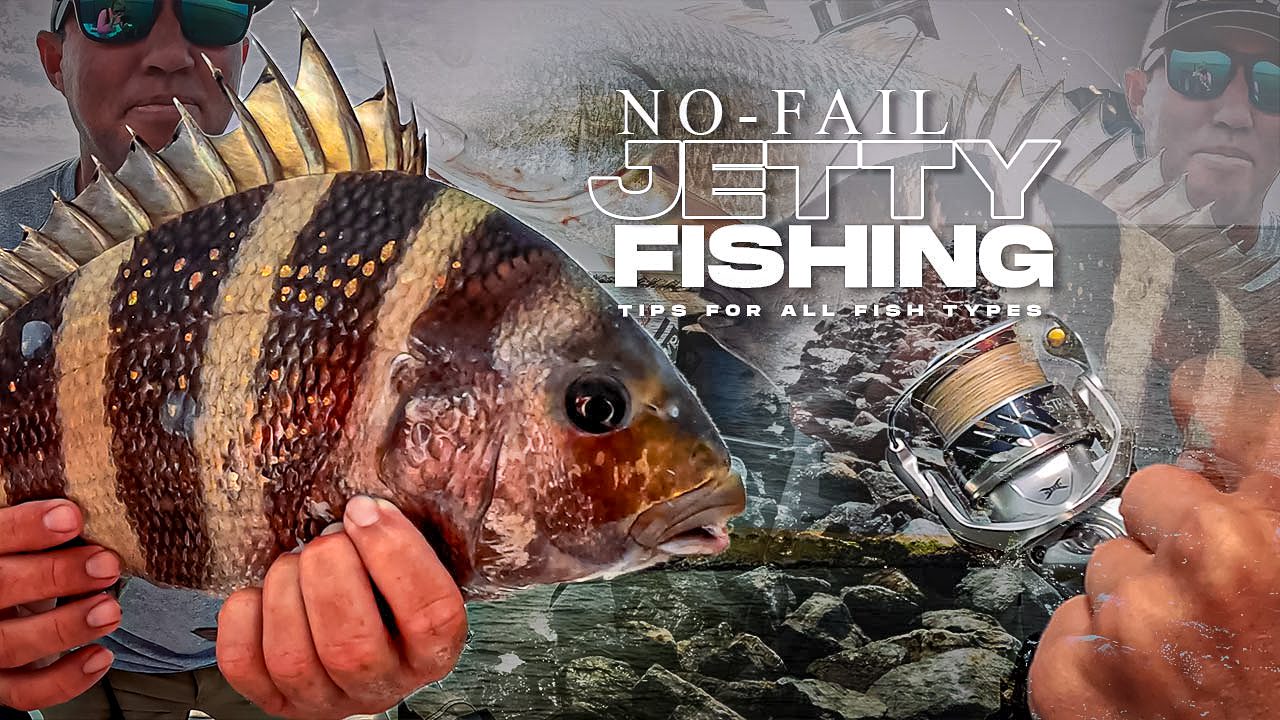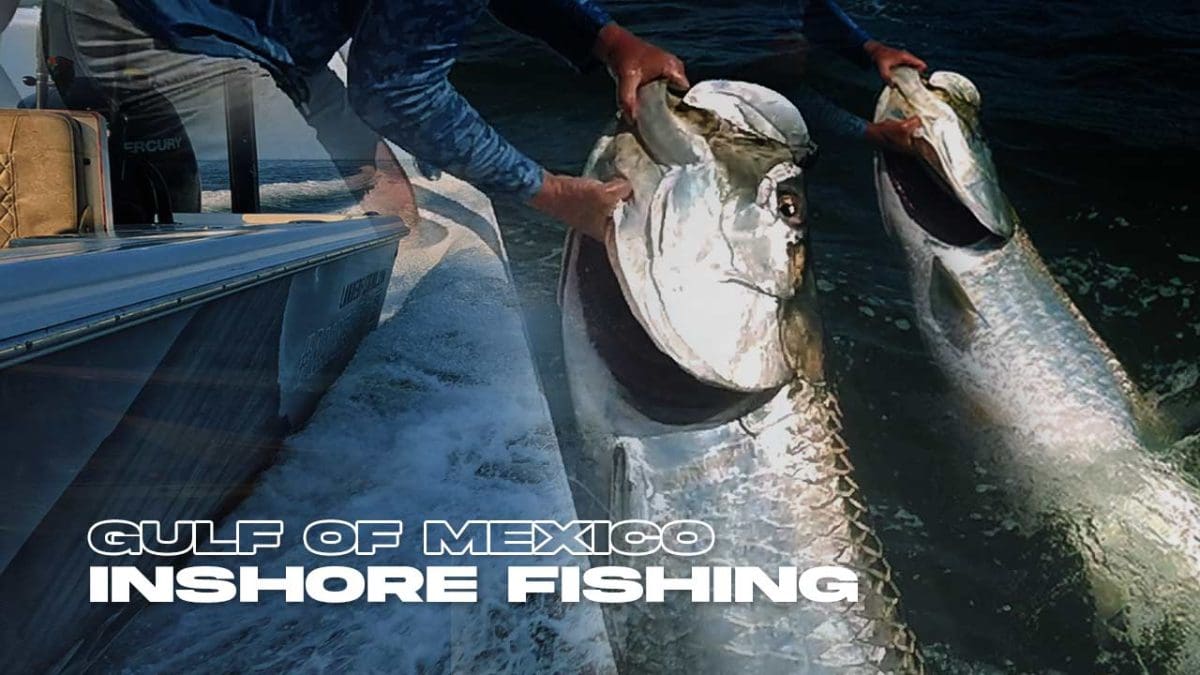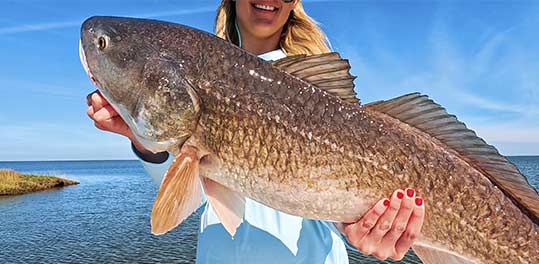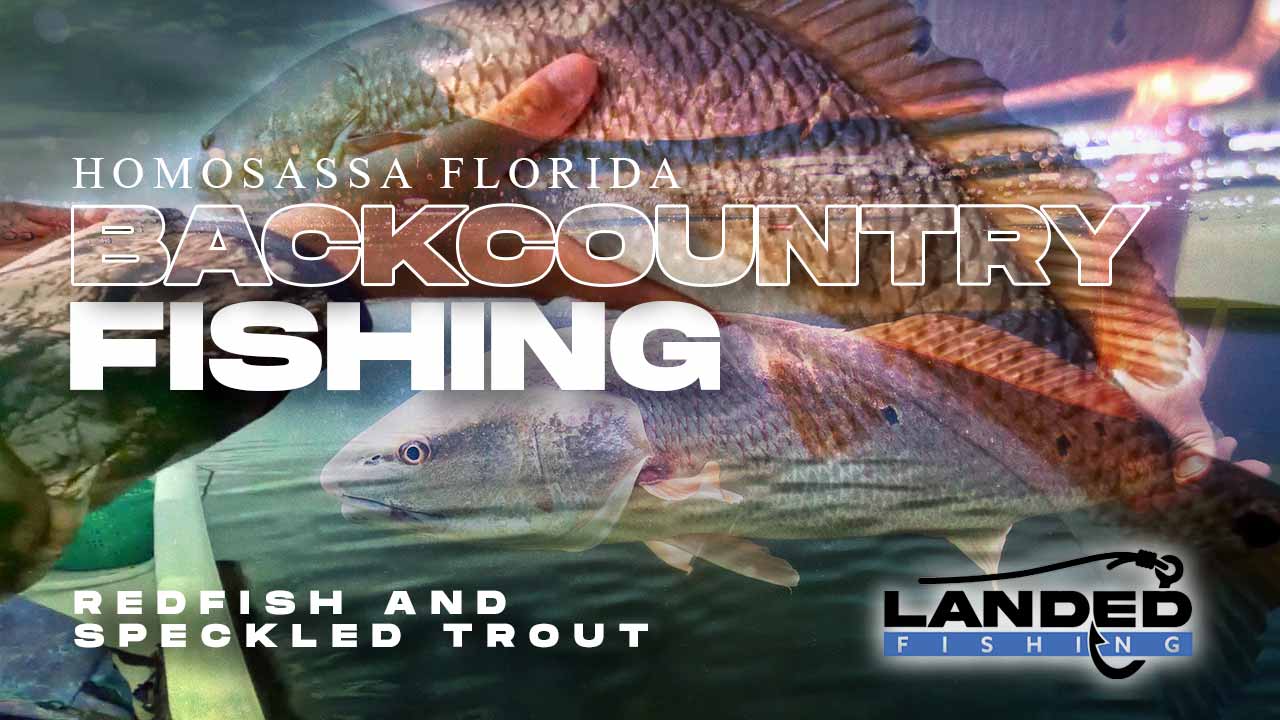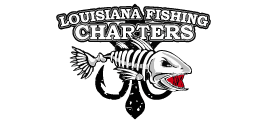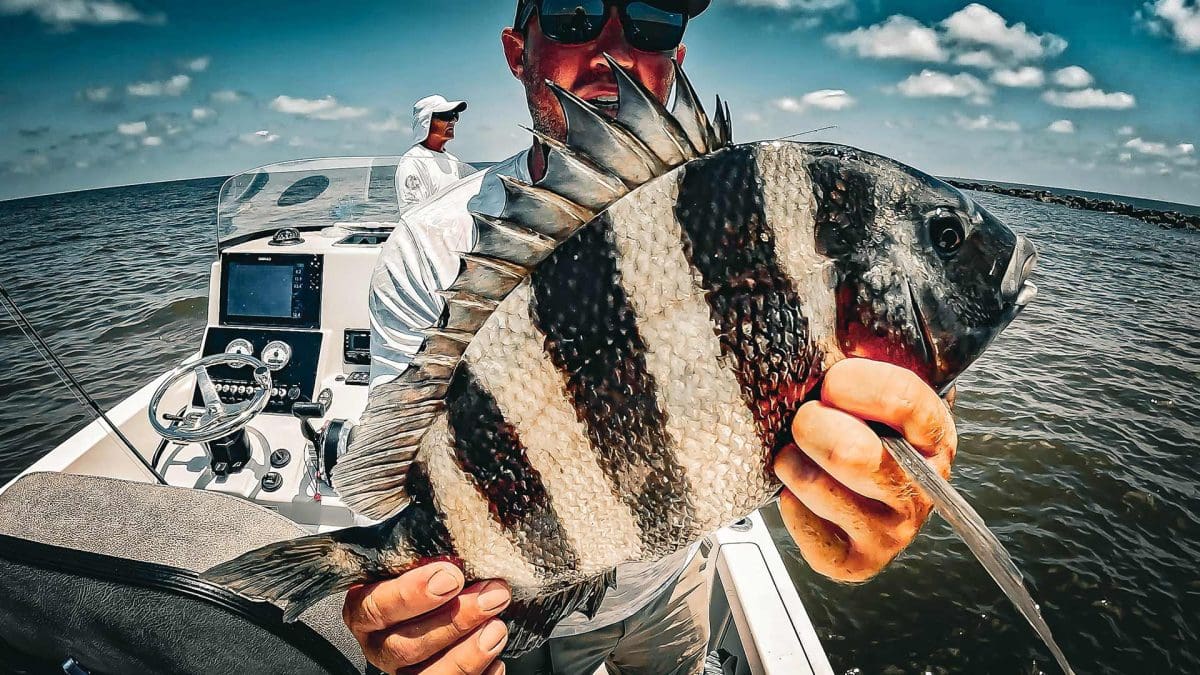Saltwater Fishing Catching Spring Speckled Trout
Spring Trout Fishing: Shell Beach Louisiana
Spring speckled trout fishing out of Shell Beach, Louisiana, is considered by many anglers as one of the premier fishing experiences in the region. Shell Beach is located in St. Bernard Parish, southeast of New Orleans, and offers excellent opportunities for targeting speckled trout during the spring months.
Discover Content
- Spring Trout Fishing: Shell Beach Louisiana
- Shell Beach: Trout Fishing
- Popping Corks for Speckled Trout
- Abundance of Trout in Shell Beach Louisiana:
- Watch Video: Catching Spring Trout EP27
- Techniques and Strategies for Catching Trout:
- Fishing Rig Setup for Speckled Trout
- Fishing Tides and Currents:
- Spring Weather Conditions: Shell Beach Louisiana
- Local Fishing Knowledge:
- Explore More
Shell Beach: Trout Fishing
Spring is a particularly productive time for speckled trout fishing in Shell Beach. The season typically begins in late February or early March and extends through May. During this period, the water temperature starts to warm up, triggering the trout’s feeding behavior and their migration towards estuaries, marshes, and nearshore waters.
Popping Corks for Speckled Trout
Abundance of Trout in Shell Beach Louisiana:
The waters around Shell Beach are known for their abundant speckled trout population. These fish, also known as spotted seatrout, thrive in the estuarine and coastal environments of the area. The extensive marshlands, barrier islands, and intricate network of bayous and channels provide ideal habitat for the trout.
Watch Video: Catching Spring Trout EP27
Techniques and Strategies for Catching Trout:
Anglers employ various techniques to catch speckled trout in Shell Beach during the spring. Some popular methods include casting artificial lures such as soft plastics, topwater plugs, and suspending jerkbaits.
Live bait, such as shrimp or mullet, can also be effective. Key areas to target include grass beds, oyster reefs, channel edges, and nearshore structures like oil rigs or jetties.
Fishing Rig Setup for Speckled Trout
Fishing Tides and Currents:
Understanding the tides and currents is crucial for successful speckled trout fishing in Shell Beach. Rising or falling tides create moving water, which is when trout are most active and feeding. Focus on fishing the incoming and outgoing tides, particularly around structure or areas where baitfish are present.
Learn More: Fishing Tides, Currents & Lunar Cycles
Spring Weather Conditions: Shell Beach Louisiana
Spring weather in Louisiana can be unpredictable, with changing fronts and occasional storms. Prior to heading out, it’s essential to monitor weather forecasts to ensure safety and optimize fishing conditions. Overcast days or low-light periods are often favorable for speckled trout activity, while strong winds may make fishing more challenging.
Learn More: Seasonal Patterns of Inshore Fish
Local Fishing Knowledge:
As with any fishing location, local knowledge is invaluable. Charter guides and experienced anglers familiar with Shell Beach can provide valuable insights into current fishing patterns, hotspots, and techniques specific to the area. They can help optimize your chances of success and provide a safe and enjoyable fishing experience.
Remember to follow local fishing regulations and limits, practice catch-and-release when appropriate, and be respectful of the environment.
It’s worth noting that fishing conditions and patterns can vary from year to year, so it’s always a good idea to stay informed through local fishing reports, forums, and up-to-date resources to make the most of your next speckled trout fishing adventure.
Explore More
How-To Catch Speckled Trout in the Gulf
How-To Catch Speckled Trout in the Gulf of Mexico
Speckled trout, also known as spotted seatrout, are a popular game fish found in the Gulf of Mexico. A species that can be caught year-round, but the best time to fish for them is during the fall and winter months. Let’s explore a few helpful tips and techniques for catching speckled trout in the Gulf.
Watch EP27: Catching Speckled Trout
Fishing Tips and Techniques for Catching Sea Trout
Learning To Catch Sea Trout
To effectively catch Sea Trout (Speckled Trout/ White Trout), it’s important to understand their behavior. Speckled trout tend to move towards shallow waters during low-light conditions and retreat to deeper waters during the daytime.
Speckled Trout also prefer structures such as rocks, jetties, grass beds, and oyster reefs to hide and hunt prey. Knowing where these structures are and when to fish for speckled trout will help to increase your chances of success.
What are the Best Times to Catch Speckled Trout?
In the warmer months, the best time of day to catch speckled trout is typically early in the morning or late in the afternoon. During these times, the lower light levels make trout more active and likely to feed, as they prefer to avoid the bright midday sun.
Dawn and dusk offer cooler water temperatures and reduced surface activity, which encourages speckled trout to come closer to the surface and shallow areas to hunt for food. Therefore, targeting these periods can significantly increase your chances of a successful catch.
However in the cooler months, you’ll find feeding times for most fish species migrate to about mid-day or when the sun is high in the sky.
What are the Best Ways to Catch Speckled Trout?
Fishing for speckled trout, or spotted seatrout, is an activity enjoyed by many anglers. Knowledge of their habits and preferences, combined with the appropriate equipment, increases the chances of a successful catch.
There are several effective fishing techniques for catching speckled trout in the Gulf of Mexico:
Artificial Lures for Speckled Trout
Speckled trout are known to strike at artificial lures such as soft plastic baits, topwater plugs, and jigs.
Use lures that mimic the prey that speckled trout feed on, such as shrimp, mullet, and minnows. Vary the retrieve speed and presentation to attract speckled trout.
Live Bait for Sea Trout
Live bait such as shrimp, mullet, and pogies are effective in catching speckled trout.
Use a popping cork or a Carolina rig to keep the bait off the bottom and increase its visibility.
Sea trout are known to be opportunistic feeders, so having a variety of bait options can increase your chances of enticing them to bite.
What is the Best Bait for Speckled Sea Trout?
When it comes to targeting sea trout, especially in Florida, choosing the right bait can make a significant difference in your success.
Here are some effective bait options to consider for catching sea trout:
Live Shrimp: Live shrimp are a go-to bait for sea trout. They are natural prey for these fish and can be rigged on a hook under a popping cork or free-lined to mimic a wounded shrimp swimming in the water.
Soft Plastic Jerkbaits: Soft plastic jerkbaits in natural colors, such as white, pearl, or silver, can imitate injured baitfish. The erratic movement of these lures can trigger aggressive strikes from sea trout.
MirrOLure and Rapala Lures: MirrOLure and Rapala plugs, particularly those designed for shallow-water fishing, can be effective for targeting sea trout. These lures mimic wounded baitfish and can be retrieved in a twitch-and-pause manner to attract strikes.
Spoons: Silver or gold spoons with a wobbling action can mimic small baitfish. Casting and retrieving spoons in areas where sea trout are known to feed can yield good results.
Live Baitfish: If available and legal, using live baitfish such as mullet, pilchards, or pinfish can be highly effective. These baitfish are part of the natural diet of sea trout and can be used with a variety of rigging methods.
Topwater Lures: During low-light conditions or in the early morning or late evening, topwater lures like poppers and walking baits can entice sea trout to strike on the surface.
Cut Bait: Cut pieces of mullet, pinfish, or other baitfish can also attract sea trout. Cast cut bait near structures such as grass beds, drop-offs, or mangroves.
Gulp! Shrimp: Gulp! artificial baits are scented soft plastics that can be very effective for sea trout. Their scent dispersion and realistic appearance can make them irresistible to these fish.
Fishing for speckled trout in the Gulf of Mexico is an fun experience that rewards both seasoned anglers and beginners alike.
Whether you’re using live baits, soft plastics, or artificial lures, knowing which bait works best in various conditions can elevate your fishing game significantly.
Best Places to Catch Sea Trout
The best places to catch speckled trout are typically in coastal estuaries, shallow bays, and inshore waters with seagrass beds or oyster reefs. These environments provide ideal habitats for speckled trout, offering abundant food sources and shelter.
Areas where freshwater mixes with saltwater, known as brackish waters, are also hotspots for speckled trout, especially around river mouths and inlets. These fish are often found in water depths ranging from 2 to 10 feet, making them accessible to both shore-based and boat anglers.
Additionally, fishing near structures like docks, piers, and jetties can be effective, as speckled trout are attracted to these areas for feeding.
Best Gulf Coast Locations to Catch Sea Trout
Speckled trout can be found throughout the Gulf of Mexico, but some areas are known for their abundance of speckled trout. Some of the best places to catch speckled trout in the Gulf of Mexico are:
Louisiana
The coastal waters of Louisiana are known for their abundant speckled trout population.
Areas such as Grand Isle, Barataria Bay, and Lake Pontchartrain are popular spots for speckled trout fishing.
Texas
The bays and estuaries of Texas are home to speckled trout, with the Galveston Bay system being a particularly productive area for speckled trout fishing.
Florida
The Florida panhandle has excellent speckled trout fishing opportunities, particularly in the Choctawhatchee Bay and Apalachicola Bay areas.
Gear and Tackle for Speckled Trout Fishing
When fishing for speckled trout in the Gulf of Mexico, it’s important to use the right gear and tackle. Here are some recommendations:
Rod and Reel for Trout
Use a medium-action spinning rod and reel combo with a 10-15 lb monofilament or fluorocarbon line.
Size Hooks for Sea Trout
Use size 1/0 to 3/0 hooks for live bait and soft plastic lures.
Popping Cork
A popping cork can increase the visibility of live bait and attract speckled trout.
Jig Heads for Trout
Use jig heads between 1/16 to 1/4 oz with soft plastic baits.
Speckled Trout Habitat and Behavior
Speckled trout, also known as spotted seatrout, are a popular game fish found in the Gulf of Mexico and along the Atlantic coast. Understanding sea trout preferred habitats and behavior is essential to catching them.
Habitat of Speckled Trout
Speckled trout can be found in a variety of habitats, including:
Inshore Waters
Speckled trout are often found in shallow inshore waters, such as bays, estuaries, and tidal creeks.
Spotted Sea Trout prefer these areas because they offer protection from predators and access to food sources.
Nearshore Waters
Speckled trout can also be found in nearshore waters, particularly around jetties, piers, and other structures.
These structures provide cover and attract prey, making them ideal feeding grounds for speckled trout.
Offshore Waters
While speckled trout are primarily an inshore species, they can occasionally be found in offshore waters during certain times of the year.
Offshore speckled trout tend to be larger and more solitary than inshore speckled trout.
Behavior of Speckled Trout
A better understanding of speckled trout behavior really can help to catch more of them. Here are some key behaviors of Speckled Trout to be aware of:
Feeding Habits of Sea Trout
Speckled trout are opportunistic feeders that will eat a variety of prey, including shrimp, crabs, mullet, and menhaden.
Speckled Trout tend to feed more actively during low-light conditions, such as dawn and dusk.
Movement Patterns of Speckled Trout
Speckled trout are known to move with the tide and current, particularly in areas with strong currents.
Sea Trout also tend to move towards shallow waters during low tide and retreat to deeper waters during high tide.
Sea Trout Spawning
Speckled trout spawn in the spring and summer months, typically in estuaries and other inshore waters.
During spawning season, trout congregate in large schools, making them easier to target.
Sensitivity to Water Quality
Speckled trout are sensitive to changes in water quality, particularly temperature and salinity.
Most Sea Trout prefer water temperatures between 60-75°F and salinities between 15-30 ppt.
Watch Video: How-To Catch Speckled Trout
Speckled trout are one of the most popular saltwater fish to target, and for good reason. They’re aggressive biters and put up a good fight, making them a blast to catch and they taste great!
Tips for Catching Speckled Trout
Now that you have a better understanding of the habitat and behavior of gulf coast speckled trout, here are some tips for catching them:
The Right Bait for Speckled Trout
Speckled trout prefer live bait such as shrimp, mullet, and menhaden.
If using artificial lures, choose lures that mimic the prey that speckled trout feed on.
Fish During Low-Light Conditions
Speckled trout are more active and easier to catch during dawn and dusk, as well as during overcast days.
Target Structure
Speckled trout are often found near structures such as jetties, piers, and oyster reefs.
These structures provide cover and attract prey, making them ideal feeding grounds for speckled trout.
Use Light Tackle for Sea Trout
Speckled trout have a delicate mouth, so it’s important to use light tackle to avoid tearing the hook out of their mouth.
How-To Catch Speckled Trout FAQs
Explore More: Sea Trout Fishing

Fishing Gasparilla Florida Inshore Grand Slam Join us as we head out from Gasparilla Florida on a perfect fall…
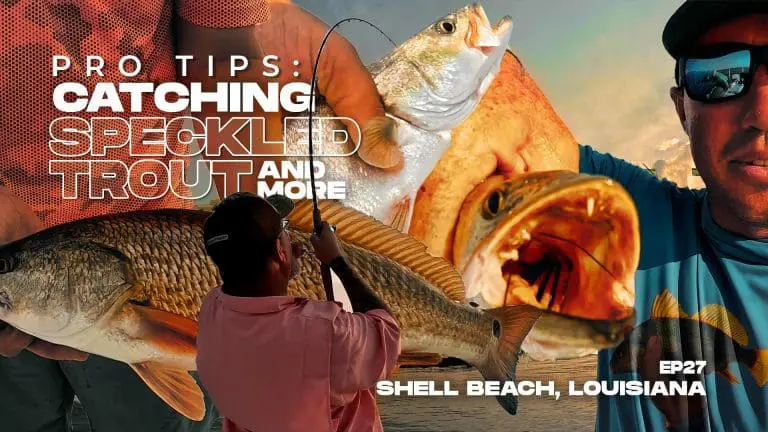
Saltwater Fishing: Catching Spring Speckled Trout, Redfish, Sheepshead and Drum Explore the Louisiana Gulf Coast, from Shell Beach Louisiana,…
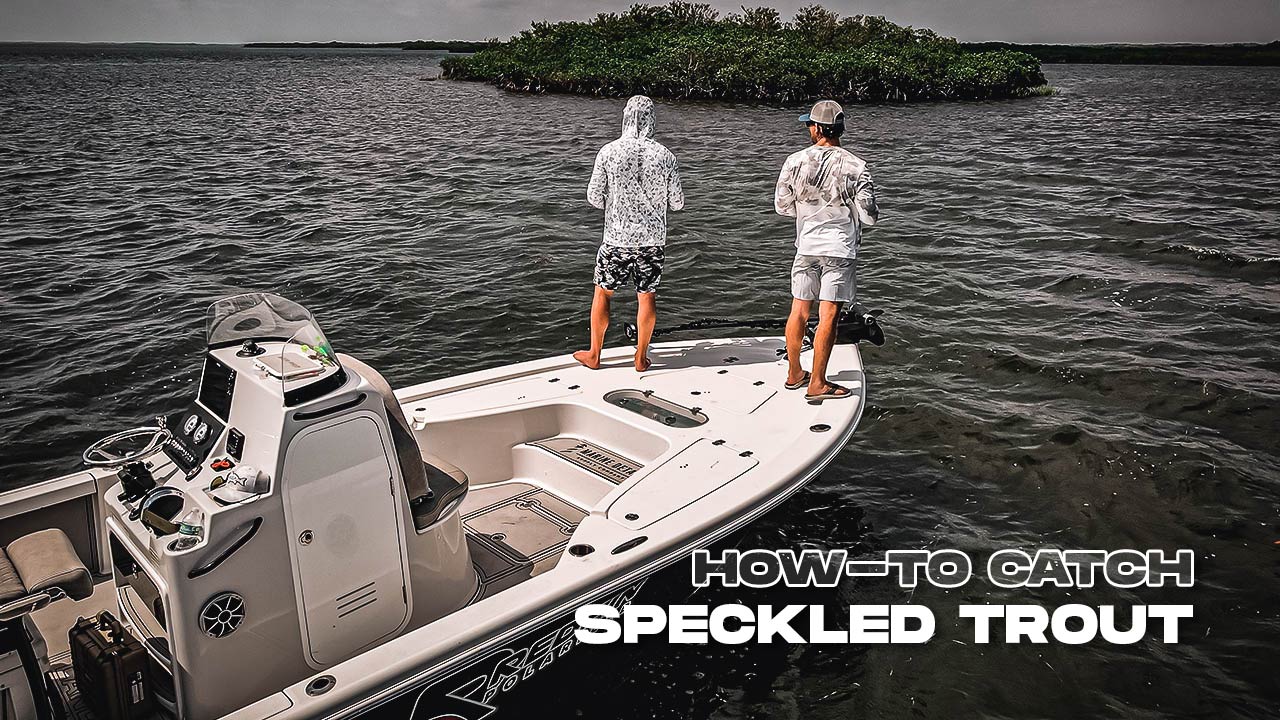
How-To Catch Gulf Coast Speckled Trout Where to Find and Catch Sea Trout: Discover the best locations for speckled…
Gulf Coast Jetty Fishing for Saltwater Fish
Catching Saltwater Fish Along a Rock Jetty
The popping cork and Kahle hook fishing rig is a versatile and effective setup for jetty fishing that can be used to catch a wide variety of fish species.
Get Hooked Up,
Subscribe to Landed Fishing
Our expert guides share tips and techniques, showcasing thrilling catches of popular fish species like redfish, snook, and tarpon.
Enjoy high-quality videos capturing the excitement of the catch and challenges in the Gulf of Mexico.
What is a Jetty?
A jetty is a structure that extends from the shore out into the water, often made of rocks or concrete. Its primary purpose is to protect the shore from erosion. Jetty fishing involves fishing from or along the jetty itself.
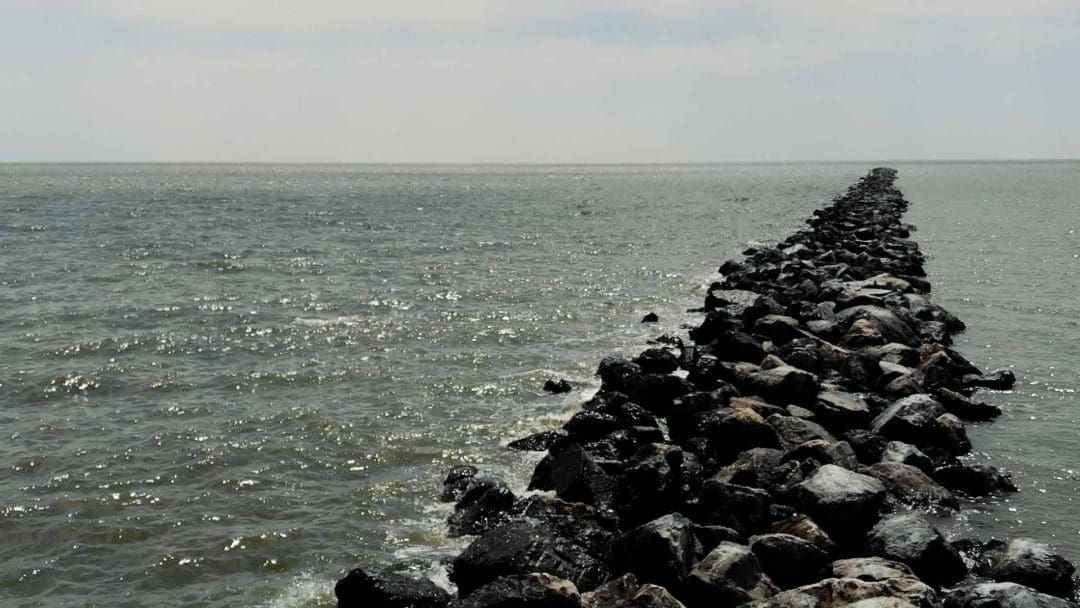
Jetties: Habitat and Structure
Jetty habitats can be home to a variety of fish species. They provide shelter and food for fish, as well as a place for them to hide from predators. The rocky surfaces of jetties often provide a habitat for invertebrates such as crabs and shrimp, which can attract larger fish.
Watch Video: Jetty Fishing Gulf Coast
Currents and Water Flow around a Jetty
The structure of a jetty can have an impact on water flow and can create currents and eddies that can affect fishing conditions. As water flows around the jetty, it can create areas of turbulence and changes in water depth, which can create a variety of fishing opportunities.
The water flow around the jetty can also have an impact on the behavior of fish. Some fish species, such as redfish, may be attracted to areas of high water flow, while others, such as trout, may prefer slower-moving water. Understanding how water flow affects fishing conditions can be key to successful jetty fishing.
It’s important to note that fishing from a jetty can also present certain risks, such as slippery surfaces and strong currents. It’s important to take appropriate safety precautions, when fishing in and around a rock jetty.
How to fish a Rock Jetty

If you’re fishing from shore, such as wearing appropriate footwear and being aware of weather and water conditions, and if you’re in a boat, keep the vessel a safe distance to avoid grounding on sub surface rocks and obstructions.
Popping Cork and Kahle Hook Rig for All Fish Types
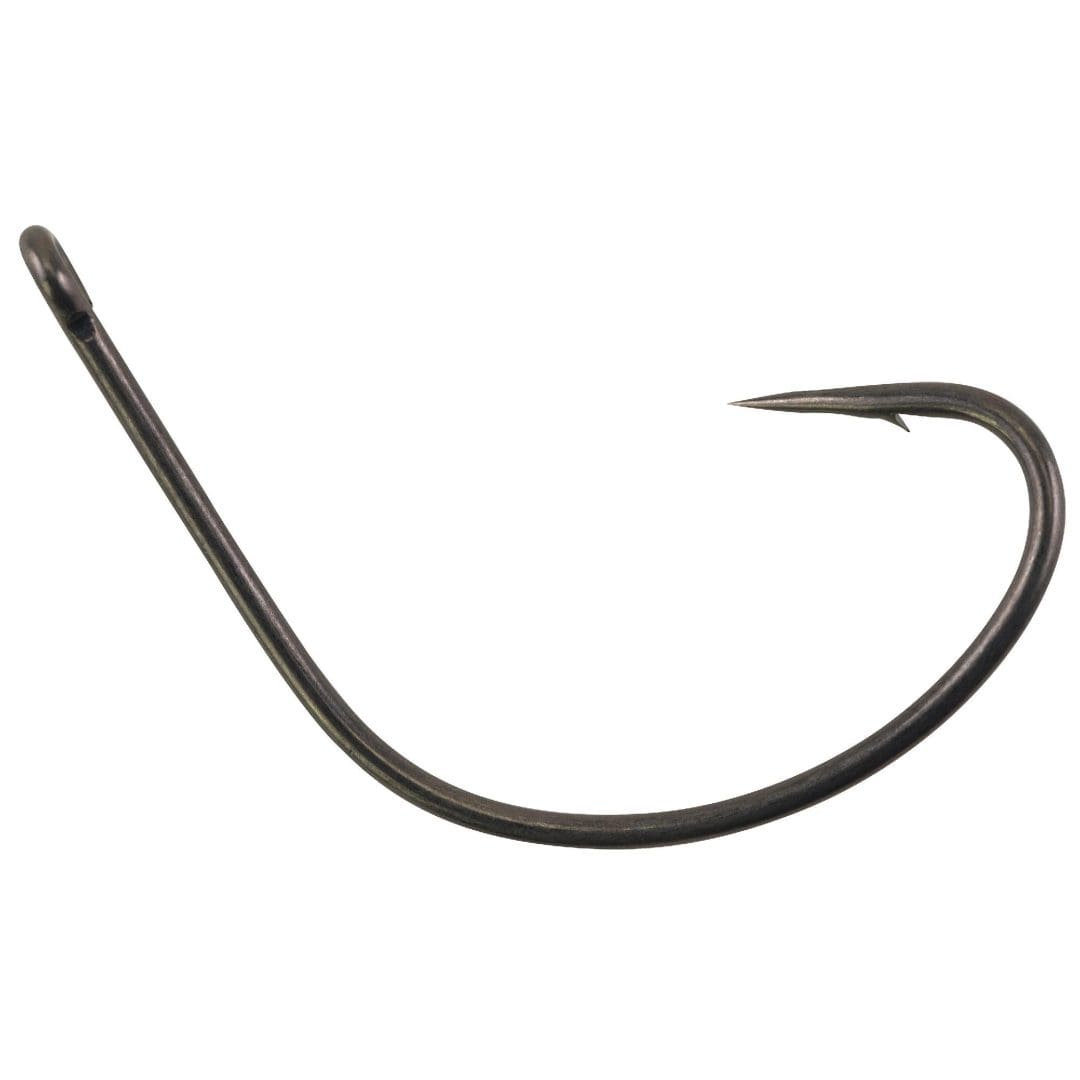
The rig consists of a popping cork, which is a buoyant float with a concave top that creates a popping sound when jerked, and a Kahle hook, which is a type of fishing hook that helps to prevent snagging on underwater debris.
To set up the rig, attach the popping cork to the main line using a swivel, and tie a leader line with the Kahle hook to the other end of the cork. Add bait or a soft plastic lure to the Kahle hook, and cast the rig out near the jetty.
The popping cork attracts fish by mimicking the sound of baitfish popping at the surface, while the Kahle hook allows for a more snag-less presentation of the bait or lure, reducing the chances of getting stuck on the rocks and increasing the chances of a bite.
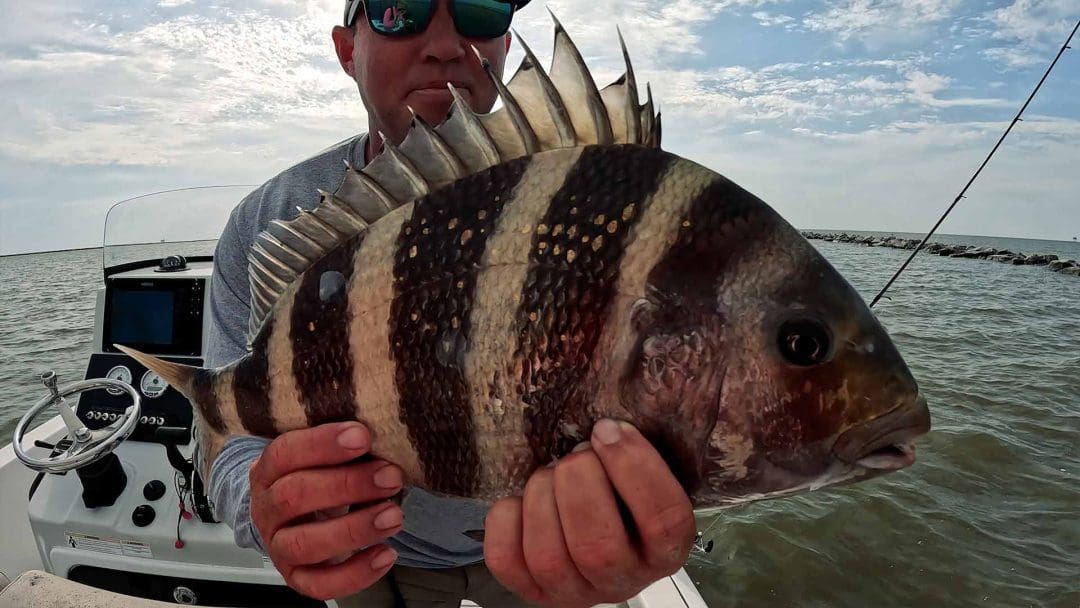
What type of fish can it catch
This rig can be effective for catching a variety of fish species, including redfish, sheepshead, drum, trout, flounder, snook, and more.
Reliable and Versatile Jetty Fishing Rig
Popping cork and kahle rig is especially useful in areas with underwater structure or vegetation, such as jetties, docks, and bridges. The popping cork and Kahle hook rig is a reliable and versatile setup that can increase your chances of success while jetty fishing for all types of fish.
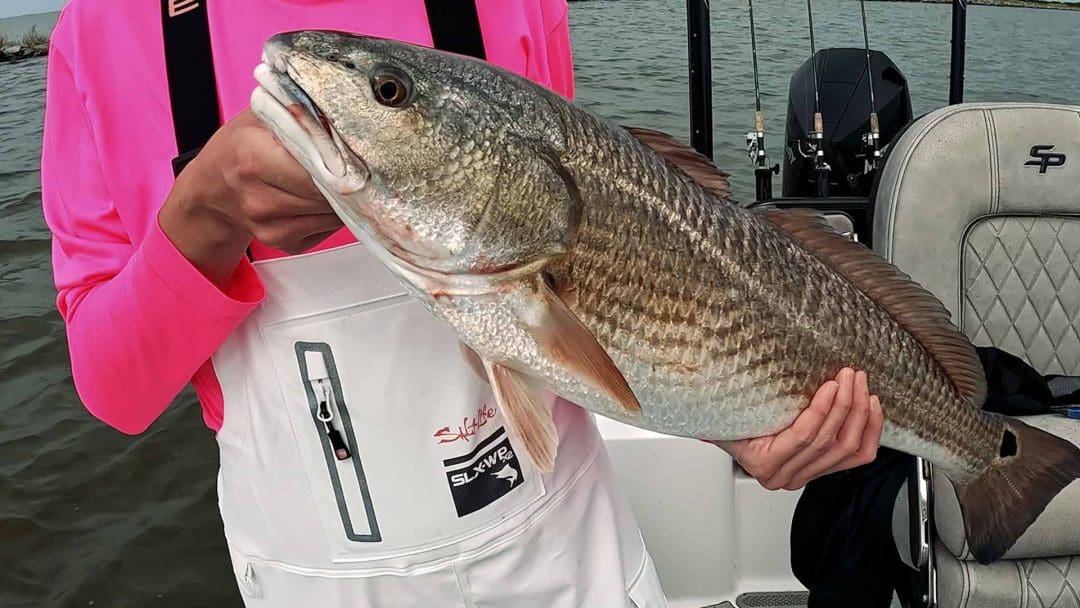
Jetty Fishing FAQs
Gulf of Mexico Inshore Fishing
Discover the Gulf Coast: Inshore Saltwater Fishing Species
Are you an avid fisherman looking for your next big catch? Look no further than inshore saltwater fishing, where you can find a variety of popular and reel-screaming fish species. From redfish to tarpon, speckled trout to flounder, there’s something for every angler.
Read on to learn more about these fish, their habitats and behaviors, and when and where to find them.
Gulf Coast Redfish:
The Majestic and Feisty Catch of Inshore Waters
Redfish are a favorite among inshore anglers for their beautiful copper color and aggressive behavior. Found along the Gulf Coast and Atlantic Ocean, they prefer shallow waters and can be caught year-round. They are known for their strength and will put up a good fight, making them a thrill to catch.
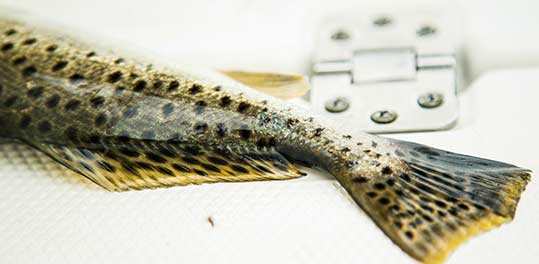
Gulf Coast Speckled Trout:
The Delicate and Delicious Prize of Inshore Fishing
Speckled trout are known for their delicate flavor and are a popular catch among inshore anglers. Found in coastal waters from Texas to Florida, they prefer shallow waters and can be caught year-round. They are known for their elusive behavior, making them a challenge to catch, but the reward is worth it.
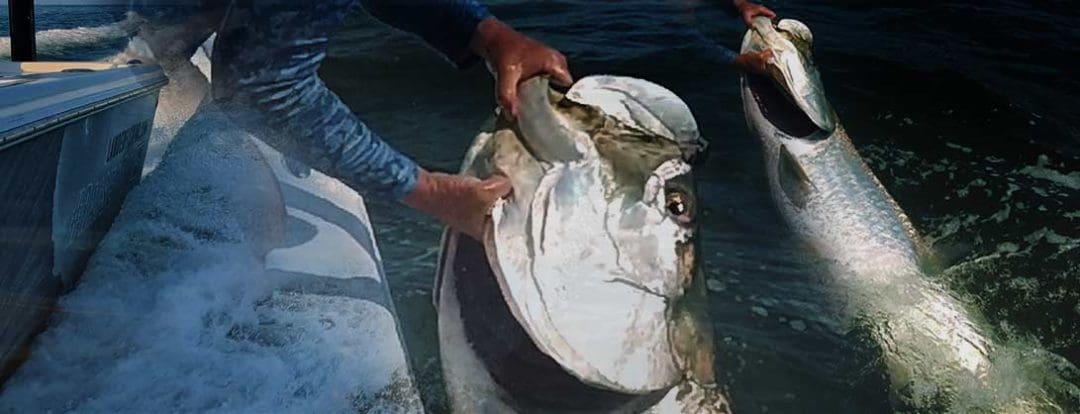
Gulf Coast Tarpon:
The King of Inshore Saltwater Fishing
Tarpon are the ultimate prize for inshore anglers, known for their sheer size and acrobatic jumps. Found along the Gulf Coast and Atlantic Ocean, they prefer warm waters and can be caught during the summer months. They are known for their unpredictable behavior and are a true test of an angler’s skill.
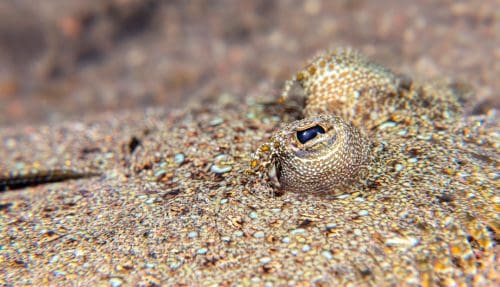
Gulf Coast Flounder:
The Camouflaged and Tasty Catch of Inshore Waters
Flounder are a popular catch among inshore anglers for their delicate and delicious flavor. Found along the Gulf Coast and Atlantic Ocean, they prefer shallow waters and can be caught year-round. They are known for their unique camouflaging abilities, making them a challenge to spot and catch.
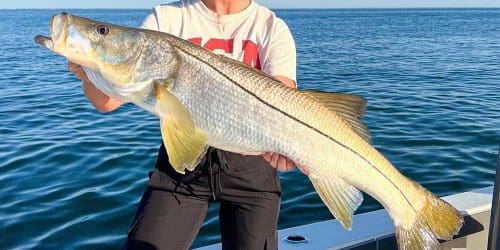
Gulf Coast Snook:
The Elusive and Acrobatic Catch of Inshore Waters
Snook are a prized catch for their acrobatic jumps and sleek body. Found in the coastal waters of Florida and the Gulf of Mexico, they prefer warmer waters and can be caught year-round. They are known for their elusive behavior, making them a challenging catch for even the most experienced angler.
Commonly Caught Fish in The Gulf of Mexico
The Gulf of Mexico is home to a wide variety of fish species, and the types of fish that are commonly caught can vary depending on the season, location, and fishing techniques used. However, some of the most common fish species that are reported to be caught in the Gulf of Mexico include:
Red Snapper
A popular game fish with a bright red color and a delicious flavor.
Grouper
A bottom-dwelling fish that can grow quite large, with some species weighing up to 800 pounds.
Mahi Mahi
Also known as dorado or dolphin fish, this species is known for its vibrant colors and acrobatic jumps.
Tuna
Several species of tuna can be found in the Gulf of Mexico, including yellowfin, blackfin, and bluefin tuna.
King Mackerel
A fast-swimming fish that can be caught using a variety of techniques, including trolling and live bait fishing.
Cobia
A large fish that can be found near structures like reefs and oil rigs, and is prized for its firm, white flesh.
Amberjack
A strong and aggressive fish that can be caught using heavy tackle and live bait.
Tarpon
A challenging game fish that is known for its impressive size and acrobatic jumps.
Gulf Coast Inshore Saltwater Fish:
Understanding Gulf Fish Species: Habitat and Behaviors
Understanding the habitat and behaviors of inshore fish is crucial to finding and catching them. Most inshore fish prefer shallow waters with plenty of cover, such as grass beds, oyster bars, and mangrove trees. They are also affected by water temperature, salinity, and tides. Learning these patterns and behaviors can help you target and catch the fish you’re after.
Seasonal Patterns and Migrations in the Gulf of Mexico:
When and Where to Find Inshore Fish
Knowing the seasonal patterns and migrations of inshore fish can greatly increase your chances of catching them. Many inshore fish migrate to different areas based on the time of year, weather, and water conditions.
For example, tarpon can be found in warmer waters during the summer months, while redfish can be caught year-round in shallow waters. Understanding these patterns can help you plan your fishing trips and catch more fish.
Inshore saltwater fishing offers a variety of popular and fascinating fish species for anglers of all levels. Understanding their habitats, behaviors, and seasonal patterns can greatly increase your chances of catching them.
So grab your gear and head out to the inshore waters for your next big catch!
Get Hooked Up,
Subscribe to Landed Fishing
Our expert guides share tips and techniques, showcasing thrilling catches of popular fish species like redfish, snook, and tarpon.
Enjoy high-quality videos capturing the excitement of the catch and challenges in the Gulf of Mexico.
Homosassa Florida Inshore Fishing
Explore: Nature Coast Inshore Fishing
The Nature Coast of Florida, specifically the areas of Homosassa and Crystal River, offer some of the best inshore fishing opportunities in the state. With a diverse range of fish species, beautiful scenery, and pleasant weather conditions, these areas are a must-visit destination for any avid angler.
Watch Video: Homosassa Inshore Fishing
Homosassa, Crystal River Florida
Weather Conditions:
When planning your fishing trip, it is important to consider the weather conditions of the area. In Homosassa and Crystal River, the weather is typically mild and sunny with occasional afternoon showers during the summer months.
The best time to fish is during the early morning hours before the sun gets too hot, or during the cooler evening hours. The winter months bring cooler temperatures, but the fishing remains good year-round.
Water Depth:
The Nature Coast is home to shallow flats, oyster bars, and deep channels. Understanding the water depth is crucial in choosing the right fishing technique and gear.
Generally, a depth of 2 to 8 feet is ideal for inshore fishing in this area. Some of the popular fishing spots include the Homosassa River, Crystal River, and Chassahowitzka River.
Fishing Rod Size and Action:
When it comes to choosing the right fishing rod, it is important to consider the size and action. A medium-light or medium action rod, around 7-8 feet long, is perfect for inshore fishing in the Nature Coast.
These rods offer enough sensitivity to feel the bites while still having enough power to handle larger fish. A spinning reel in the 2500-3500 size range is recommended for this type of fishing.
Opportunity Fish Species:
The Nature Coast is home to a wide range of fish species, including Redfish, Snook, Trout, Tarpon, Flounder, and Cobia.
Redfish and Trout are abundant year-round, while Snook and Tarpon are more prevalent during the warmer months. Flounder and Cobia are more common during the winter months.
Lures vs Live Bait:
Both lures and live bait can be effective when fishing in the Nature Coast. When using lures, choose ones that mimic the natural prey of the target species.
Topwater lures, soft plastics, and jigs are all popular choices.
When using live bait, shrimp, pilchards, and pinfish are effective options. Live bait can be fished under a popping cork or on a jighead.
Boat Safety:
When fishing in the Nature Coast, boat safety should be a top priority.
Always wear a life jacket, and make sure your boat is equipped with all necessary safety equipment, including a fire extinguisher, flares, and a first aid kit.
Always check the weather forecast before heading out and be mindful of changing conditions. Finally, be respectful of other boaters and the environment.
The Nature Coast of Florida offers excellent inshore fishing opportunities for anglers of all skill levels. With mild weather, diverse fish species, and beautiful scenery, it is a must-visit destination for any fishing enthusiast.
Understanding the water depth, choosing the right gear, and practicing boat safety are all essential in having a successful and enjoyable fishing trip.
Book a Scalloping Trip:
Explore More
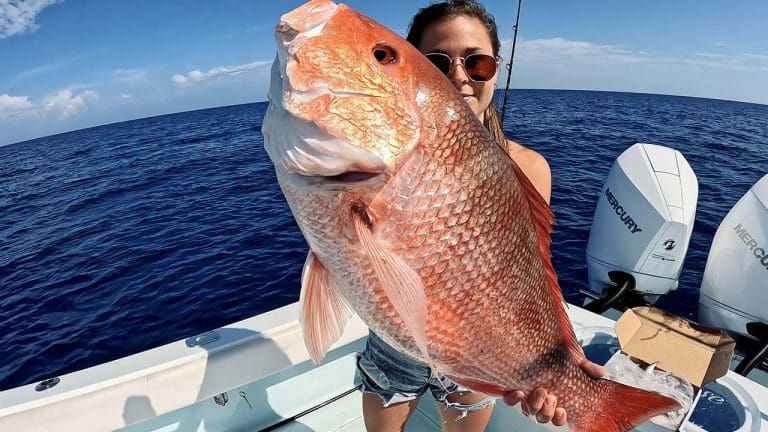
Fishing Terminology Common terminology used in reference to saltwater fish species, fishing gear, equipment and tackle
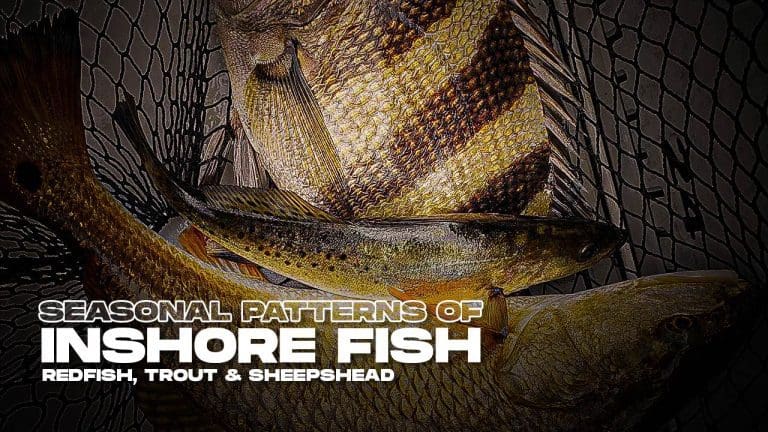
Seasonal Patterns of Inshore Fish Explore the seasonal patterns of a few of the most common inshore fishing species…
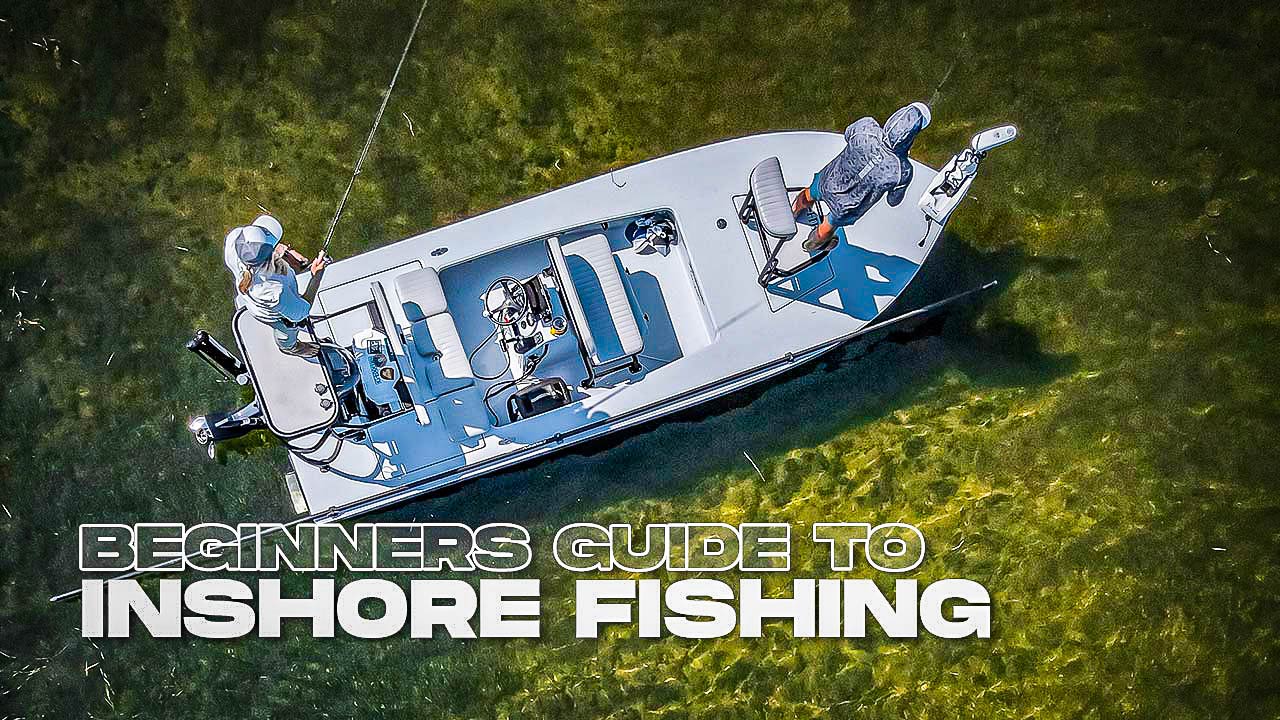
Beginners Guide to Inshore Fishing Looking to explore inshore saltwater fishing? We've compiled a few of the basics that…

